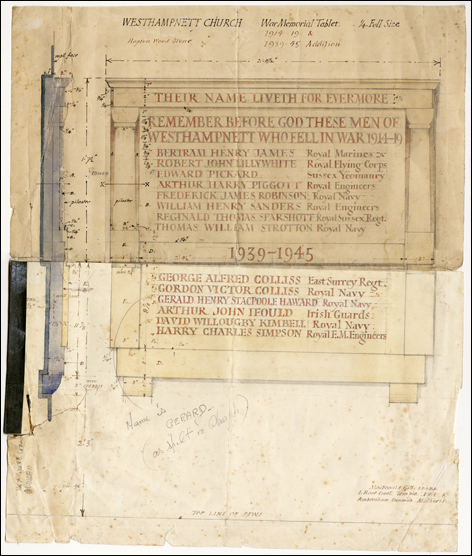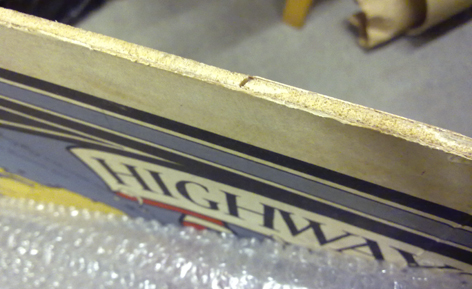Westhampnett Church War Memorial
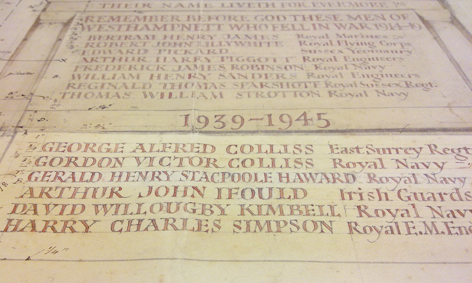
The Macdonald Gill exhibition team have been busy going through all of the items that are to be displayed in the cases within the exhibition. There will be ten display cases in total to be placed within the gallery as well as one outside in the main foyer of the University’s Faculty of Arts entrance. These cases will hold a total of around 180 items from flat paper-based pieces to a selection of Max’s tools and his beautiful large format camera.
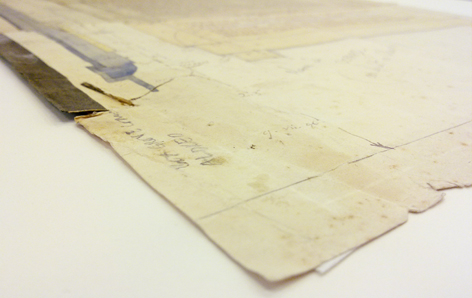
One of the pieces that has caused a bit of a last minute change was due to go into case number seven within the gallery. This is an original piece of artwork for the Westhampnett Church First and Second World War memorial lettering designs. The top half section of the artwork is for the First World War memorial with an addition for the Second World War attached to the bottom. The dimensions of this piece are 305x365mm and it has been window-mounted on archival board sized 510x625mm. Due to the large size of the mount board, it was decided the object was too large to go into the case as it is.
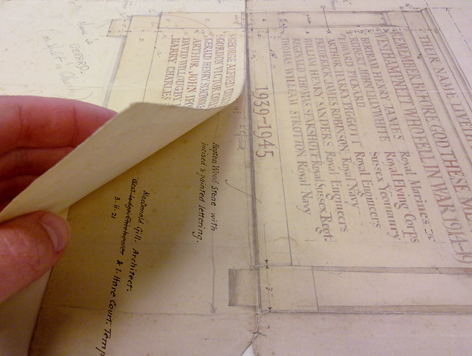
The private owner of this particular piece has informed me that detaching the original sketch from its mount board would be OK with her. This prompted me to have a closer look at the object – it has been mounted onto the archival mount board with the use of archival tape in all four corners. As you can see from the image above, the original item itself is created from two separate pieces of paper. These are only attached together by a small (non-archival) piece of black tape running along the left side edge near the middle of the piece where the two sides meet.
The paper is not only very soft, but also torn and damaged. This is especially evident along the edges of the black tape attaching the two sides of the artwork. Because this is the only adhering element between the two pieces, I questioned how safe or sensible it would be to remove the original from its backing board to be placed in the display case for exhibiting purposes. The archival tape pieces holding the original to the backing board are very solid and tacky, so the removal of these would have also required some careful conservation work. It seemed to me unnecessary to remove this object from its professionally and safely finished window mount.

After some deliberation, we have decided that we will replace the original by using a facsimile of it in the exhibition case. This of course meant I was to digitise the original piece. Due to its large size of the mount board however, the digitising needed to be done in two sections – our scanner here in the Design Archives was not big enough to enable a ‘continuos scan’. I carefully attached the two digitised halves together in Photoshop, making sure not to lose any of the information within the piece in the process. The file has been taken to the printers and this facsimile will be sitting in case number seven in due course!
